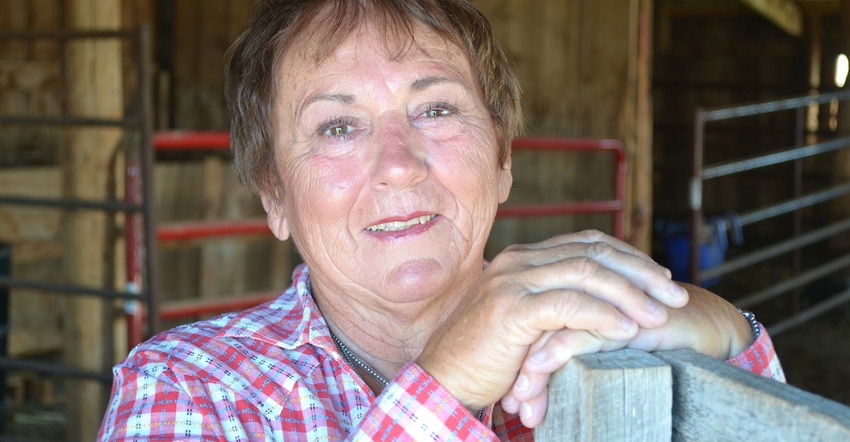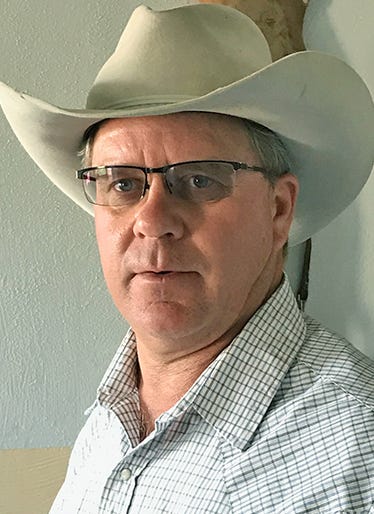October 29, 2018

Editor’s note: This is the 12th and final story in a series exploring how ranchers and farmers are benefiting from renewable energy.
By Robert Waggener
Five geothermal-heated stock tanks installed on a northeast Wyoming ranch are working so well that the family is now helping other livestock producers in the region develop systems for their operations.
“These systems were built by ranchers for ranchers, and they are generating a lot of excitement,” says Bud Williamson, whose family ranches near the small town of Moorcroft. “There’s no more ice chopping, or no more expensive bills to heat stock tanks with electricity or propane.”
Williamson says his family was previously spending nearly $2,500 each winter on electricity for tank heaters.

INNOVATING STOCK TANKS: Bud Williamson has added geothermal stock tank installation to his diversified farm business. The innovation is good for customer electric bills and thirsty cattle in winter.

“That is a horribly expensive way to heat water, so we started looking for alternatives,” he says. “Our thought process of using a geothermal-heated water system for livestock came from a gentleman in Nebraska named Rush Finch, who designs greenhouses that are heated and cooled using geothermal.”
Nearly five years ago, Williamson and three of his nine children — Bud Jr., Levi and Toby — installed the first geothermal stock tank on the family ranch, and it worked so well that first winter they quickly put in four more systems, perfecting each one as they went.
As water in a culvert buried nearly 10 feet in the ground warms to the approximate 52-degree-F temperature of the surrounding earth, it rises in the culvert and then circulates with cold water at the surface of the stock tank.
“We’ve never had water in a tank freeze over,” Williamson says. “During one storm when the overnight temperature got down to 21 below zero, we went out that morning thinking we’d be chopping ice — but that wasn’t the case.”
The Williamsons run a cow-calf and yearling operation, and also do custom grazing. To allow more children to work on the ranch full time, they began diversifying years ago, installing water pipelines, three-season stock tank systems and fencing for other ranchers.
“Collectively, that became a very important part of our business,” Williamson says.
Happy customer speaks
As word began to spread about the success of their geothermal stock tanks, they added the tanks as yet another component of their business. In the past four years, they have installed more than 30 systems for other producers — including Nancy Harsy, who raises cattle near Lusk, Wyo.
“We now have five geothermal stock tanks scattered around our ranch, and we are so pleased with them we are planning to add a sixth near our corrals,” Harsy says.
“When you are running two or three of those electric stock tank heaters, you can watch your meter go in circles,” she continues. “I would rather chop ice than see my electric bill climb, but chopping ice is not a fun thing to do. Shards of ice fly into your face, and you have a bunch of thirsty cows standing there wanting water.”
She says her cows now have a more consistent water supply in winter, and it is warmer than the nearly 32-degree-F water they got during the ice-chopping days.
“My electrical bill has definitely gone down, and the cows look much more content during cold weather,” Harsy says.
Electric-powered wells feed water lines and the stock tanks on both the Harsy and Williamson ranches, but Williamson says he and his sons have installed geothermal stock tanks on other ranches having systems fed by solar-powered wells.
“They are working very well,” he says.

VALUE IN RENEWABLES: Dallas Mount, a University of Wyoming Extension educator, says installing a geothermal stock tank can be a do-it-yourself business.

Using earth’s heat improves the bottom line
Geothermal-heated stock tanks are “absolutely a thing to consider” if you raise livestock in an area that experiences below-freezing temperatures in winter, says Dallas Mount, a University of Wyoming Extension educator.
“Anytime you can get away from having to use traditional stock tank heaters, it’s going to be a good thing,” Mount says. “It gets very expensive in a hurry, whether using electricity or propane.”
In his many roles helping ranchers, Mount annually co-teaches a “Ranching for Profit” school, and he says using renewable energy like wind, solar and geothermal can boost profits over the long term.
And, in the case of geothermal-heated stock tanks, they can reduce labor costs on those operations where chopping ice is a daily chore from late fall through early spring.
“Using geothermal is a pretty simple, low-cost, effective way of heating stock water,” he says. “I have visited with quite a few ranchers who have geothermal systems, and everything I have heard has been positive.”
Mount says ranchers can hire someone to help build and install such systems, but do-it-yourselfers can get the job done, too, if they have access to equipment that can dig a hole deep enough to geothermally heat water, which is typically 9 to 10 feet.
“The concepts are not complicated. It’s a matter of building something that will be effective, dependable and serviceable,” says Mount, noting that geothermal tanks make the most sense if you have an electric- or solar-powered well in addition to a pipeline running through your property that is buried below the frost line.
“Using geothermal and other renewable energy sources, such as solar and wind, are the way to look when you’re trying to reduce overhead costs on the ranch,” Mount says.
Waggener writes from Laramie, Wyo.
You May Also Like




